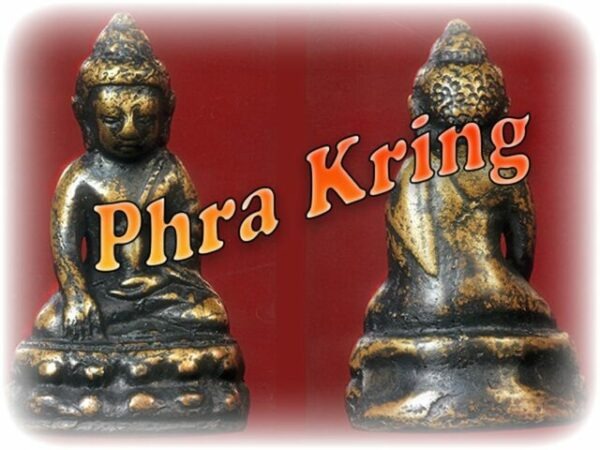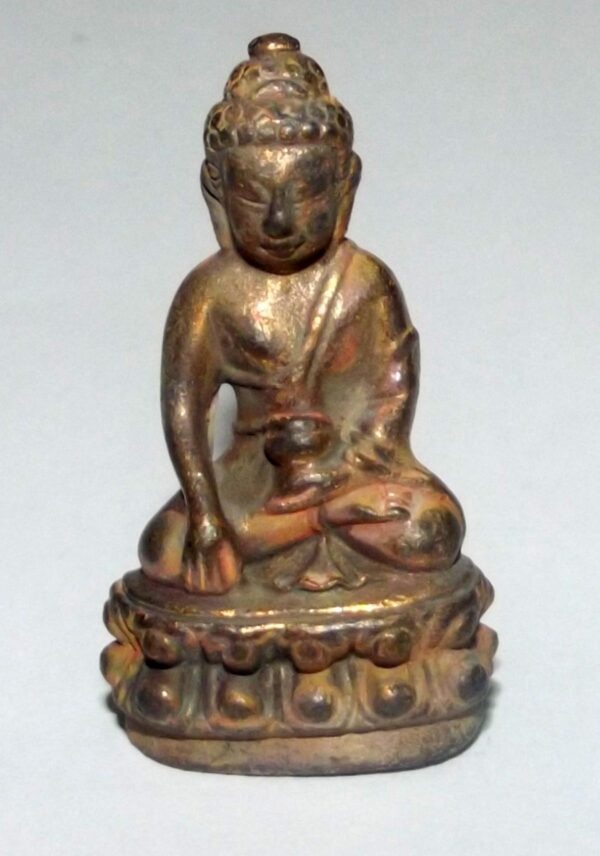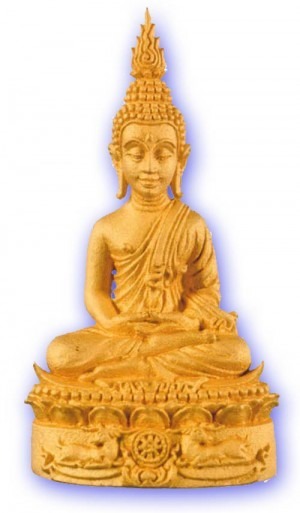A Deeper Look into the Origins and Beliefs surrounding The Phra Kring Thai Medicine Buddha Amulet
The Phra Kring Thai Medicine Buddha amulet, a relic deeply embedded in the spiritual and cultural milieu of South-East Asia, warrants a comprehensive academic examination. This article endeavors to provide an insightful exploration into the historical, cultural, and spiritual dimensions of the Phra Kring amulet, with an emphasis on its significance in Thai Buddhist tradition, as well as its resonance in the broader realm of Buddhism, including Tibetan Vajrayana and Chinese Mahayana sects.
Historical Origins and Cultural Significance
The roots of the Phra Kring amulet are firmly grounded in the historical legacy of Thailand, a nation where Buddhism has flourished for centuries. Although primarily associated with Thailand, the amulet bears relevance to Mahayana Buddhist countries, including China, Tibet, and Taiwan. It is frequently acknowledged as the Medicine Buddha or Phra Buddha
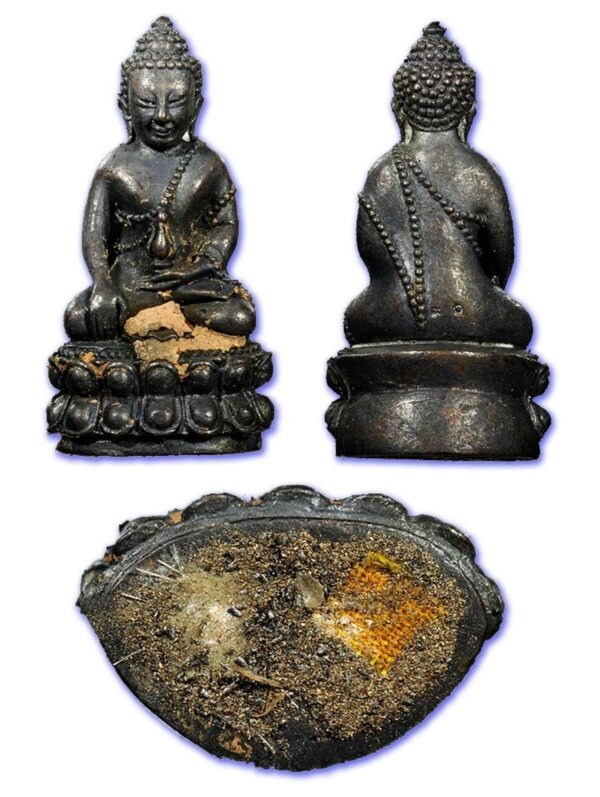
Pra Kring Ha Jantr Paen Lor Boran Gon Ud Pong – First edition 2541 BE – Luang Phu Jantr – Wat Wang Wern
The Bhaisajayaguru, is revered for his healing and compassionate attributes. The amulet’s evolution within the Thai Theravada tradition is a testament to the amalgamation of diverse cultural influences, particularly from Chinese migrants who settled in Thailand. This migration brought with it the practice of venerating Phra Buddha Bhaisajayaguru, offering protection and prosperity during voyages and business ventures.
The historical roots of the Phra Kring amulet can be traced to the reign of King Naresuan and Phra Somdej Panaret in the Ayutthaya period. Unfortunately, historical texts, referred to as tamra, which elaborated the intricate process of crafting Phra Kring amulets, were lost during tumultuous times. However, the preservation of this sacred knowledge by devoted individuals such as Somdej Ma of Wat SamPloem and later Somdej Pavarit of Wat Bovorn marked the beginning of the amulet’s prominence.

Pra Kring Ha Jantr Paen Lor Boran Gon Ud Pong – First edition 2541 BE – Luang Phu Jantr – Wat Wang Wern
The creation of Phra Kring amulets diverges between Mahayana and Theravada traditions. In Mahayana Buddhism, these amulets are meticulously crafted by amalgamating the life story of the Medicine Buddha’s Bodhisattvahood and Enlightenment with precious metals. In Theravada tradition, a specific set of Yant designs and the preference for nava loha, a combination of nine sacred metals, are employed. The internal ball, known as ‘Kring,’ which produces a melodious sound when shaken, holds immense cultural and spiritual significance. This sound mirrors the sacred chants using bells, deeply resonating with the Mahayana tradition.
Spiritual and Healing Properties
The Phra Kring amulet is celebrated for its spiritual and healing attributes. Devotees hold firm the belief that wearing or keeping these amulets in close proximity brings healing to physical ailments, protection, and prosperity. Central to the amulet’s potency are the twelve magnificent vows made by Phra Buddha Bhaisajayaguru upon his attainment of Enlightenment. These vows, as detailed in the sacred Medicine Buddha Sutra, encompass radiating divine light, awakening dormant minds, fulfilling material needs, dispelling heretical views, and providing healing for a myriad of afflictions, both physical and mental.
A significant aspect of the amulet’s practice is the recitation of the sacred Katha, a mantra that serves as a conduit for invoking the blessings of Phra Buddha Bhaisajayaguru. This ritual connects the practitioner with the divine energy of the Medicine Buddha, facilitating healing, protection, and spiritual enlightenment.
Phra Kring Wat Suthat: Prominence and Legacy
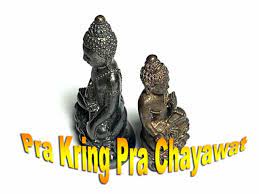
Phra Kring and Phra Chaiyawat Thai Amulets
Ven. Sangharat Pae, the esteemed abbot of Wat Suthat, played a pivotal role in elevating the prominence of Phra Kring. He proclaimed Wat Suthat as the custodian of the most exceptional Phra Kring amulets. This temple, colloquially known as the “Temple in the Heavens,” stands as one of Thailand’s six most revered religious sites. The amulets of Wat Suthat derived their profound spiritual power, known as “Palang Saksit,” through a sacred and mythical ritual that has been preserved throughout the years. The current methodology of crafting Phra Kring amulets, however, remains closely guarded, adding an aura of mystique to their production.
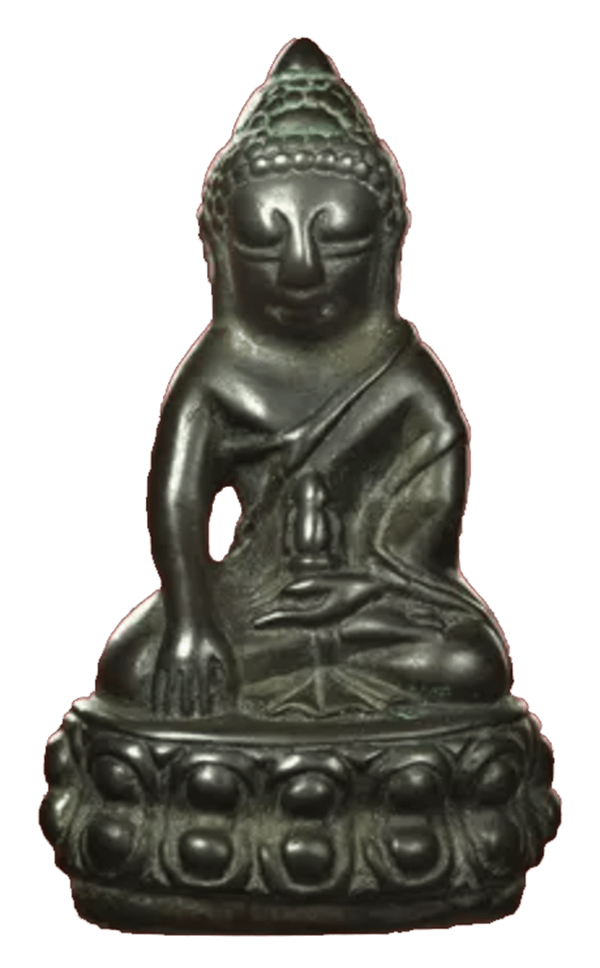
Phra Kring Wat Bovon Early Era
One could say perhaps, that the Phra Kring Thai Medicine Buddha amulet represents a compelling nexus of historical, cultural, and spiritual dimensions. Its significance is not confined to the boundaries of Thailand but extends to various Buddhist sects, underscoring its universal appeal. As scholars, historians, and anthropologists embark on the study of South-East Asian cultures, Buddhism in Asia, and the anthropology of spirituality, the Phra Kring amulet provides a fertile ground for scholarly exploration. With its profound historical legacy and enduring spiritual allure, it continues to captivate the minds of those in pursuit of understanding its place within these intricate contexts.
